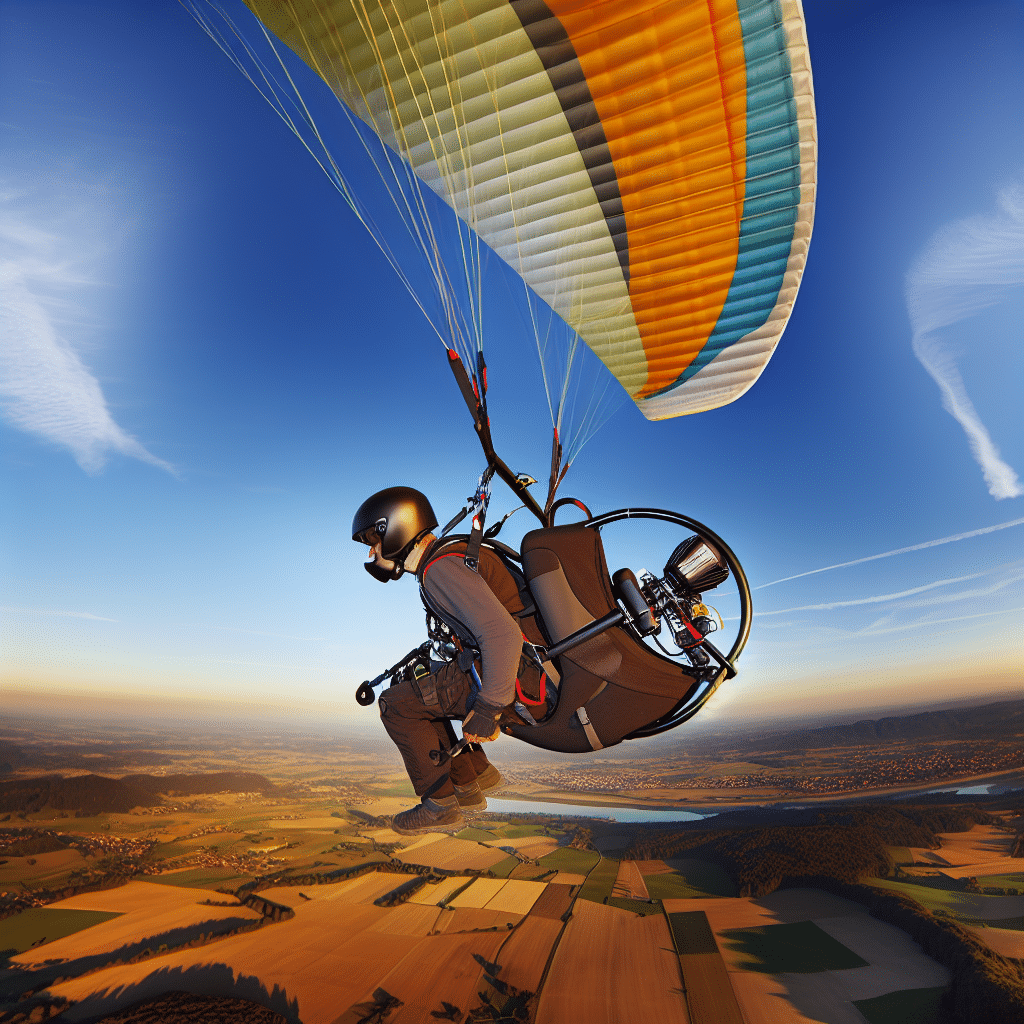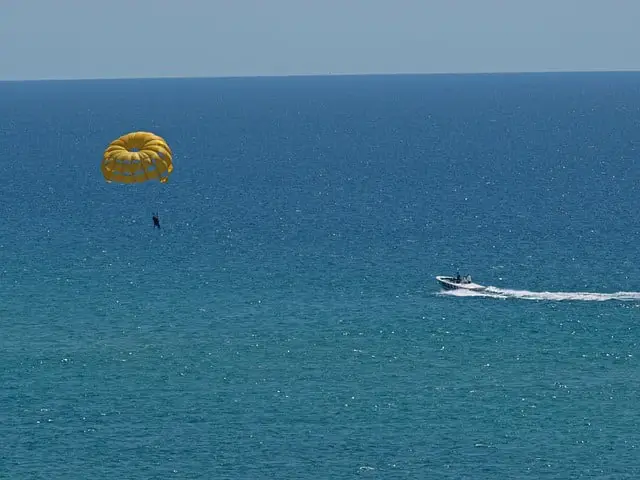Paramotoring is an exhilarating adventure sport that combines the freedom of paragliding with the power of a motorized backpack. Often referred to as powered paragliding, paramotoring allows enthusiasts to take off from a flat surface and soar through the skies with unparalleled control and precision. If you’ve ever dreamt of flying like a bird, paramotoring might just be the answer. In this comprehensive article, we will explore paramotoring from the ground up, covering everything you need to know to get started.
What is Paramotoring? Understanding the Basics
Paramotoring, also known as powered paragliding (PPG), involves using a paraglider wing (or canopy) combined with a motorized frame worn on the back. This motor provides thrust, allowing pilots to take off from level ground without the need for an elevated launch site or thermal currents. Unlike traditional paragliding, which relies solely on wind currents and thermals, paramotoring gives pilots the freedom to fly in a wider range of conditions.
How Does It Work?
The motor, typically a small two-stroke engine, powers a propeller that generates thrust. This thrust propels the pilot forward, creating lift beneath the canopy. The pilot steers by shifting their weight and using brake toggles to manipulate the canopy’s shape and direction. The system is designed to be portable and lightweight, making it accessible for adventure seekers of all ages and fitness levels.
Equipment Needed
To get started with paramotoring from the ground up, you’ll need the following essential gear:
1. **Paramotor Unit**: The motor and propeller assembly.
2. **Paraglider Wing**: The fabric wing that creates lift.
3. **Harness**: Connects the pilot to the wing and motor.
4. **Helmet**: Essential for safety.
5. **Reserve Parachute**: An extra precaution in case of an emergency.
6. **Protective Gear**: Gloves, knee pads, and suitable clothing.
Getting Started: Training and Certification
Why is Training Important?
Paramotoring may seem straightforward, but it requires proper training to ensure safety and proficiency. Enrolling in a certified training program is crucial for learning the fundamentals, including ground handling, takeoff procedures, in-flight control, and landing techniques.
Finding a School
Look for schools accredited by recognized organizations such as the United States Powered Paragliding Association (USPPA) or the British Hang Gliding and Paragliding Association (BHPA). These programs typically offer a combination of theoretical knowledge and hands-on practice with experienced instructors.
Certification Process
Completing a training program usually involves a series of lessons and flights under the supervision of an instructor. After demonstrating competence in various skills and understanding safety protocols, you’ll receive a certification that qualifies you to fly solo.
The Thrill of Flight: What to Expect in Your First Flights
Pre-Flight Preparations
Before your first flight, you’ll perform a pre-flight inspection of your gear, check weather conditions, and go through a mental checklist. Ensuring everything is in working order and the weather is suitable for flying is crucial for a successful takeoff.
Takeoff
The takeoff process involves inflating the wing by running into the wind while increasing throttle. As the wing catches air, it will begin to lift, and the propeller’s thrust will propel you off the ground. It’s an exhilarating moment as your feet leave the earth, and you start to ascend.
In-Flight Experience
Once airborne, the experience is surreal. The world below becomes a patchwork of landscapes, and the sensation of freedom is unmatched. You can control your altitude and direction with delicate inputs, making it possible to explore various areas from a bird’s-eye view.
Safety Tips and Considerations
Weather Awareness
One of the most critical aspects of paramotoring is understanding weather conditions. Calm winds and clear skies are ideal, while strong winds, rain, or turbulence can pose serious risks. Always check the weather forecast and local conditions before flying.
Maintenance and Inspection
Regular maintenance of your equipment is essential for safety. Inspect your wing, motor, and harness for wear and tear before each flight. Adhering to a maintenance schedule for the engine ensures reliable performance.
Know Your Limits
As a beginner, it’s important to recognize your skill level and avoid pushing boundaries. Gradually increasing the complexity of your flights and maneuvers helps build confidence and competence without unnecessary risks.
Why Should You Try Paramotoring?
Accessible and Affordable
Compared to other forms of aviation, paramotoring is relatively affordable and accessible. The equipment can be transported easily, and many pilots transport their gear in their cars.
An Unmatched Sense of Freedom
The feeling of soaring through the skies, with the wind in your face and the world below, is hard to match. Paramotoring offers an unmatched sense of freedom and adventure, making it a popular choice for thrill-seekers.
Community and Camaraderie
The paramotoring community is welcoming and supportive. Joining clubs and groups allows you to share experiences, learn from others, and enjoy the camaraderie that comes with a shared passion for flight.
Conclusion: Your Path to the Skies
Embarking on the journey of paramotoring from the ground up is an adventure like no other. It offers a unique blend of thrill, freedom, and accessibility that appeals to a wide range of enthusiasts. With the right training, equipment, and a keen awareness of safety, you can experience the joy of powered paragliding and create unforgettable memories soaring through the skies. Whether you’re a seasoned aviator or a complete novice, paramotoring has the potential to transform your perspective on flight and adventure.




